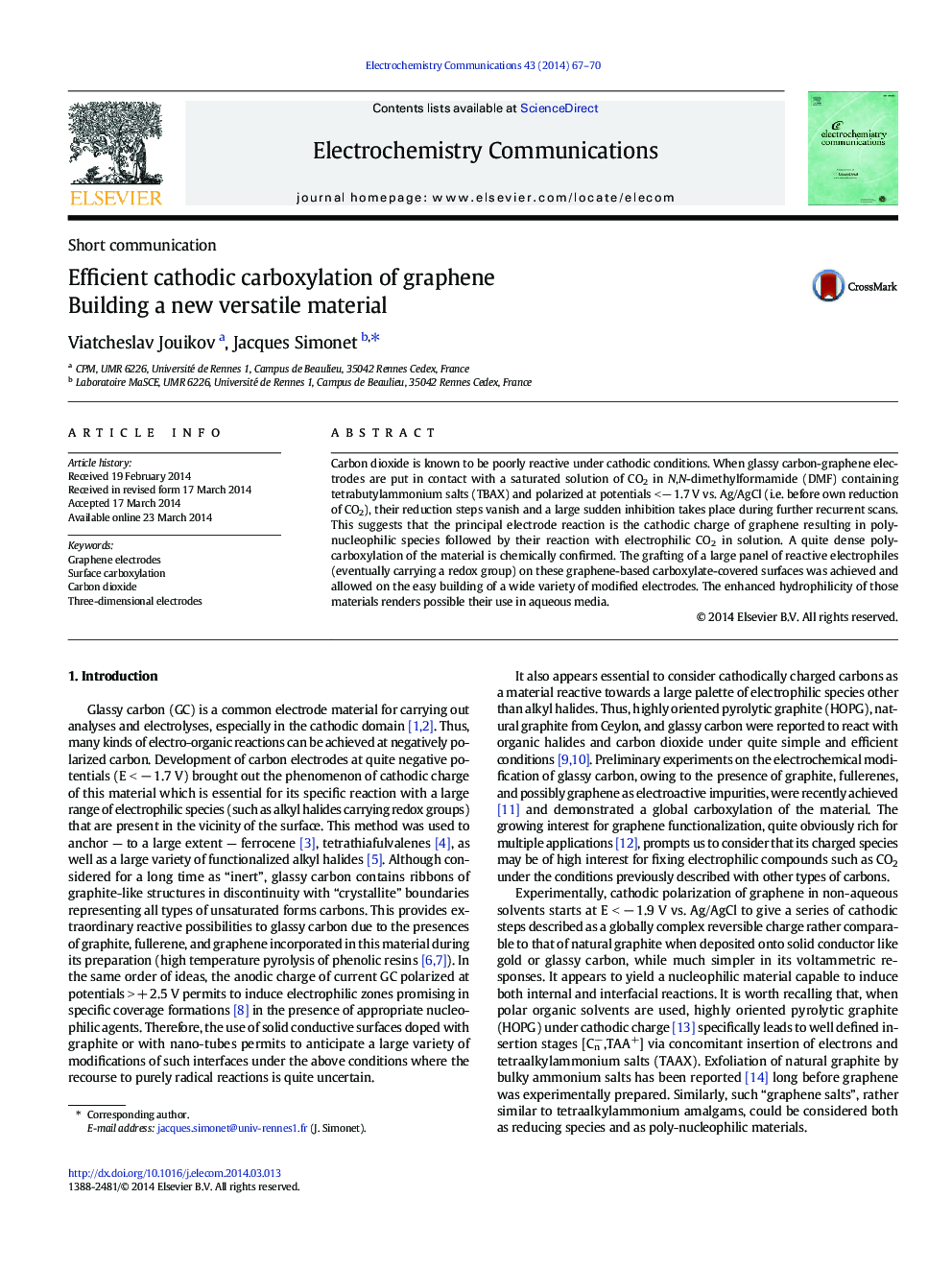| Article ID | Journal | Published Year | Pages | File Type |
|---|---|---|---|---|
| 179029 | Electrochemistry Communications | 2014 | 4 Pages |
•Preparation of carboxylated graphene as a new material•New three-dimensional electrodes•Easy electrode modification by redox groups•Hydrophilization of carbonaceous materials•Possible applications both in organic and aqueous media
Carbon dioxide is known to be poorly reactive under cathodic conditions. When glassy carbon-graphene electrodes are put in contact with a saturated solution of CO2 in N,N-dimethylformamide (DMF) containing tetrabutylammonium salts (TBAX) and polarized at potentials < − 1.7 V vs. Ag/AgCl (i.e. before own reduction of CO2), their reduction steps vanish and a large sudden inhibition takes place during further recurrent scans. This suggests that the principal electrode reaction is the cathodic charge of graphene resulting in poly-nucleophilic species followed by their reaction with electrophilic CO2 in solution. A quite dense poly-carboxylation of the material is chemically confirmed. The grafting of a large panel of reactive electrophiles (eventually carrying a redox group) on these graphene-based carboxylate-covered surfaces was achieved and allowed on the easy building of a wide variety of modified electrodes. The enhanced hydrophilicity of those materials renders possible their use in aqueous media.
Graphical abstractFigure optionsDownload full-size imageDownload as PowerPoint slide
